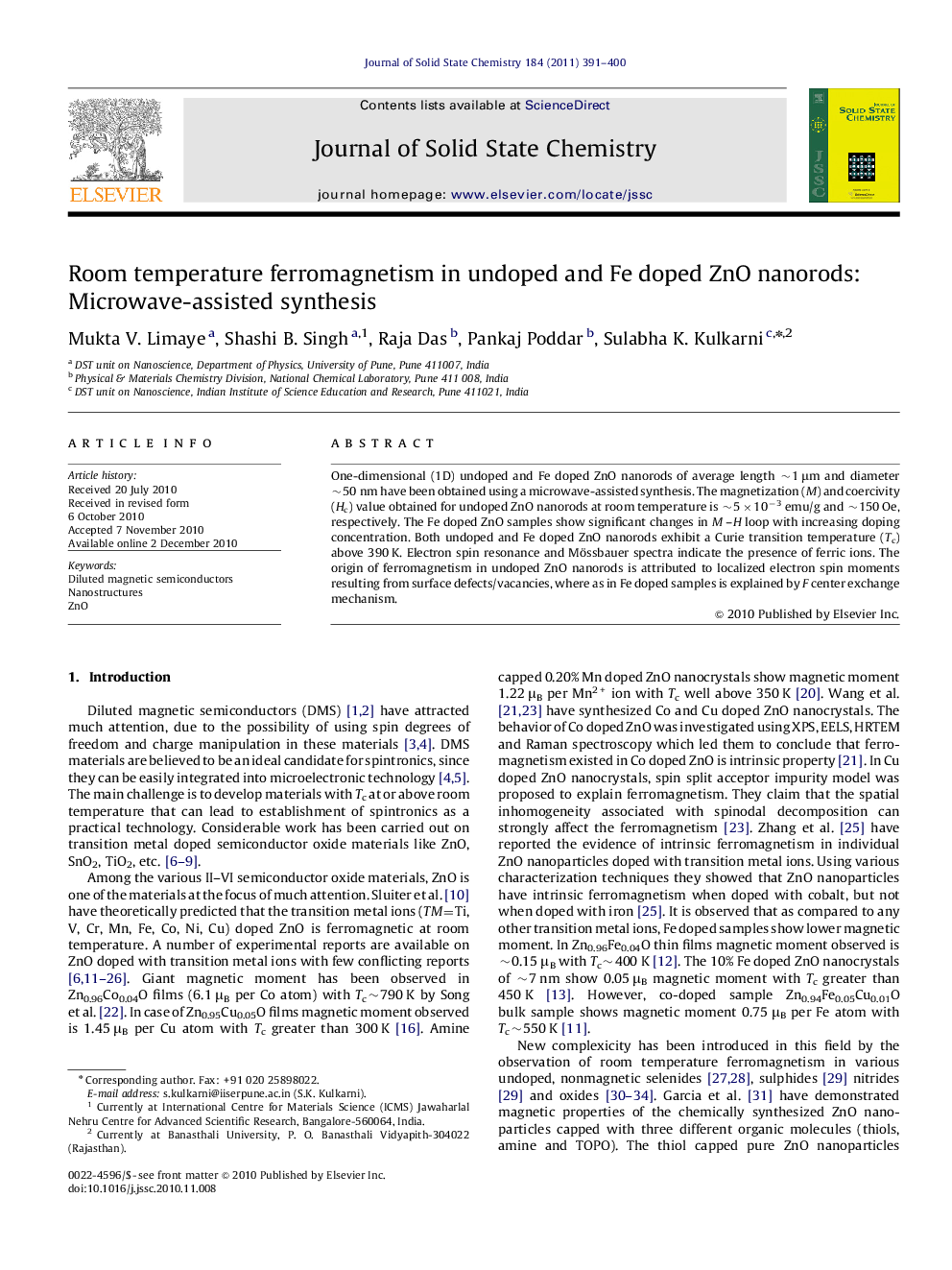| Article ID | Journal | Published Year | Pages | File Type |
|---|---|---|---|---|
| 1331015 | Journal of Solid State Chemistry | 2011 | 10 Pages |
One-dimensional (1D) undoped and Fe doped ZnO nanorods of average length ∼1 μm and diameter ∼50 nm have been obtained using a microwave-assisted synthesis. The magnetization (M) and coercivity (Hc) value obtained for undoped ZnO nanorods at room temperature is ∼5×10−3 emu/g and ∼150 Oe, respectively. The Fe doped ZnO samples show significant changes in M –H loop with increasing doping concentration. Both undoped and Fe doped ZnO nanorods exhibit a Curie transition temperature (Tc) above 390 K. Electron spin resonance and Mössbauer spectra indicate the presence of ferric ions. The origin of ferromagnetism in undoped ZnO nanorods is attributed to localized electron spin moments resulting from surface defects/vacancies, where as in Fe doped samples is explained by F center exchange mechanism.
Graphical abstractRoom temperature ferromagnetism has been reported in undoped and Fe doped ZnO nanorods of average length ∼1 μm and diameter ∼50 nm.Figure optionsDownload full-size imageDownload as PowerPoint slideResearch Highlights► Microwave-assisted synthesis of undoped and Fe doped ZnO nanorods. ► Observation of room temperature ferromagnetism in undoped and Fe doped ZnO nanorods. ► Transition temperature (Tc) obtained in undoped and doped samples is above 390 K. ► In undoped ZnO origin of ferromagnetism is explained in terms of defects/vacancies. ► Ferromagnetism in Fe doped ZnO is explained by F-center exchange mechanism.
